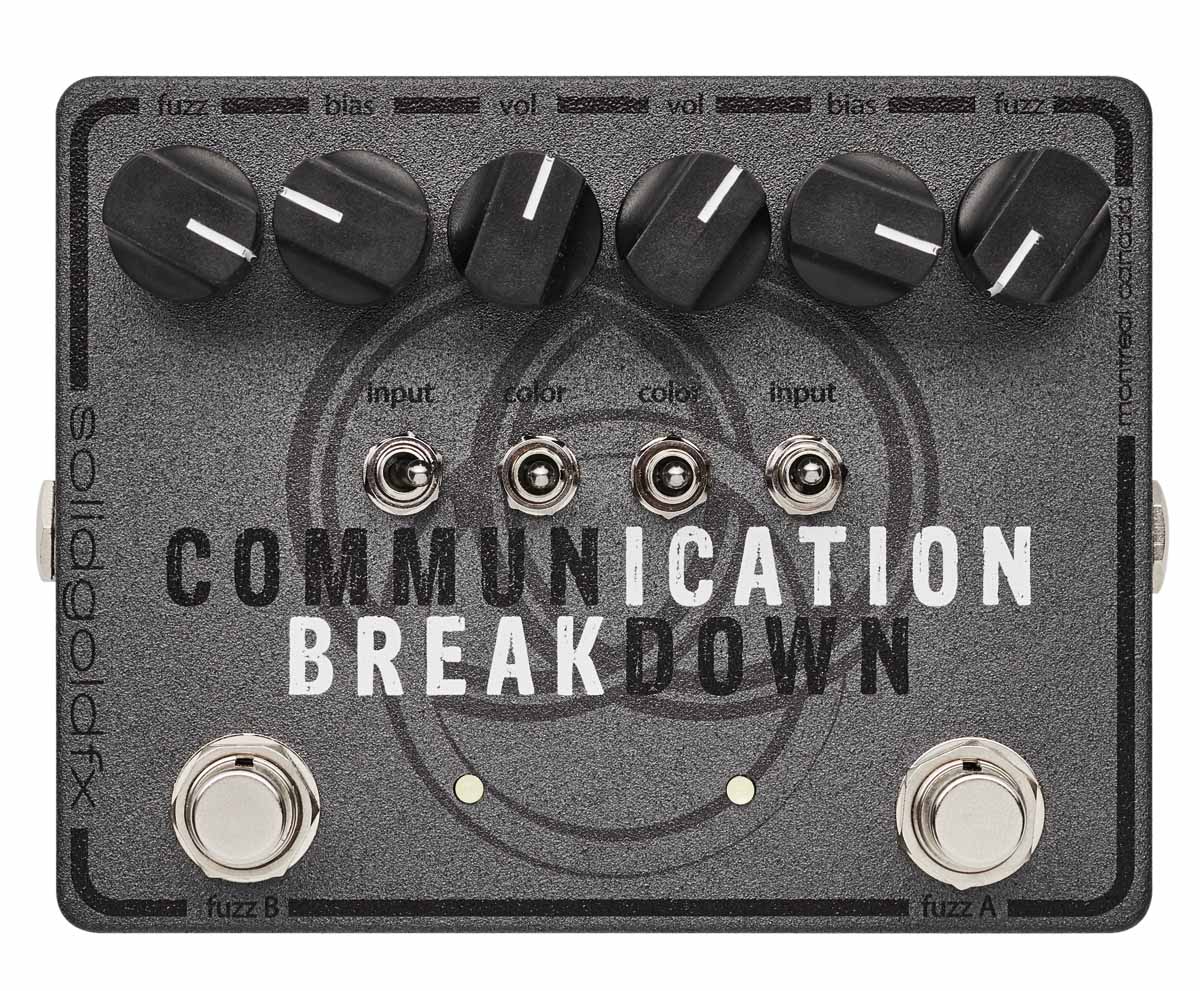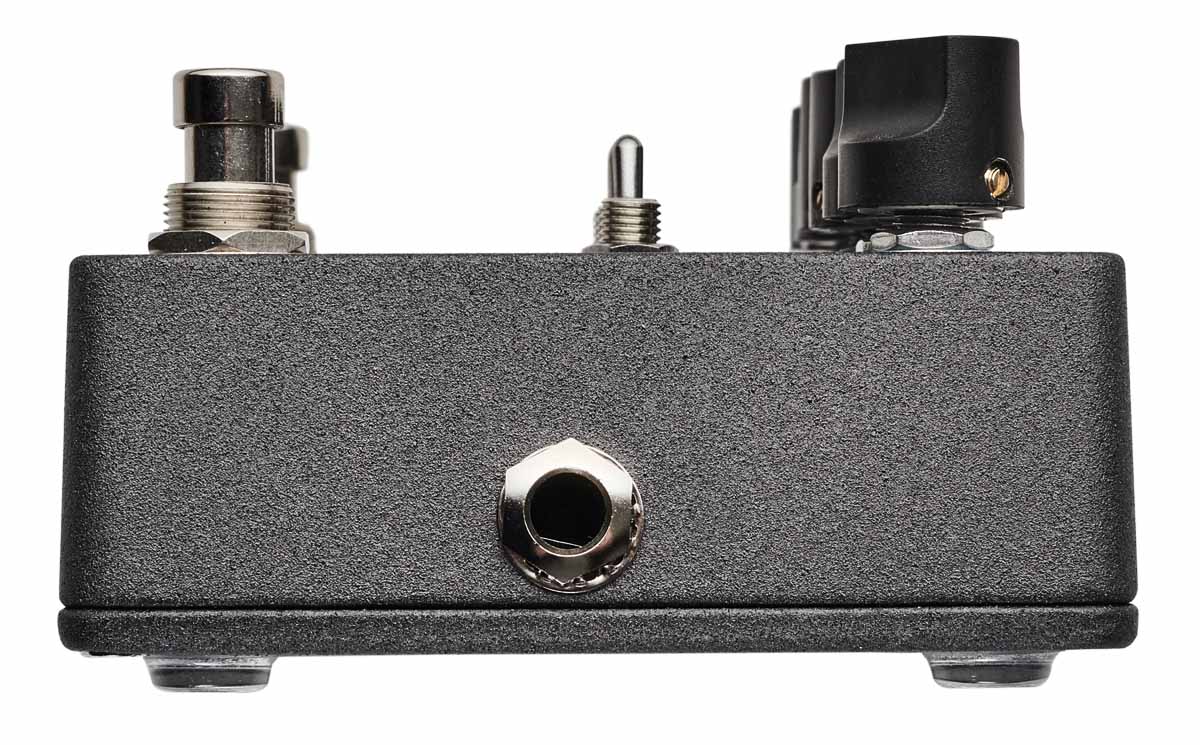Guitar World Verdict
With two vintage Tone Bender styles in one enclosure, the Communication Breakdown is a fuzz with plenty of range.
Pros
- +
Two classic fuzz flavours in one pedal.
- +
Bias knob and switchable options offer tweaking scope.
- +
Input attenuation to play better with wahs.
Cons
- -
Knob and switch layout could be more intuitive.
You can trust Guitar World
Rightly regarded as one of the classic fuzz pedals, the Tone Bender, introduced in 1965 by Sola Sound, has spawned many straight-up clones and pedals taking inspiration from the various iterations of its circuitry.
Now, Canadian company SolidGoldFX has put two fuzzes based on Tone Bender circuitry into a single pedal with independent footswitching for each, so you can choose to use them individually or both together.
The Communication Breakdown features Fuzz B based on the MkII Tone Bender introduced in 1966 and famously used by Jimmy Page.
There is also Fuzz A based on the circuitry now known as 1.5, a transitional design that used two transistors and was briefly produced in 1966 between the very first MkI Tone Benders and the MkII, both of which are three-transistor units.

That two-transistor design may have been shortlived in the Sola Sound Tone Bender but it is very closely related to the Italian-made Vox Tone Bender circuit and the Arbiter Fuzz Face circuit.
Homage to two sufficiently different vintage circuits in one pedal, then, but the silicon-based Communication Breakdown is no slavish retro clone: Fuzz A has been equipped with hotter transistors and Fuzz B has a JFET preamp added for “stability and tonal clarity”
For each side you also get adjustable bias and two three-way toggle switches, one for Color (EQ) and the other to offer different input attenuation to aid interfacing with wah pedals.
Further to that there are some ‘set and forget’ DIP switches – one for each side – that toggle between the Bold (increased output level and midrange) and the default Comp setting that is said to deliver a softer and more compressed tone.
Sounds
Plugging in with the Input and Color switches set to their positions for no input attenuation and bypassed EQ, first impressions of Fuzz A are that it does sound a lot like a Fuzz Face – and a side-by-side test confirms this.
This is nice bright‑sounding fuzz that’ll take you from gritty drive up to full-on fuzzy square‑wave goodness, and it’s fuzz that cleans up reasonably with guitar volume keeping the top-end intact.
The Color switch offers options if you want to tame the top-end but the main key to dialling in the sound is the Bias knob, which offers variations over its travel from full-fat fuzz with plenty of bass to something leaner and more gated, although it never gets to a really spluttery ‘broken battery’ sound.
That range is all there to be used but you’ll likely find one sweet spot that fits your needs.

If you’re plugged from guitar directly into the pedal, the input attenuation switch has a direct effect on the sound that you may wish to take advantage of because the two extra positions cut gain and bass to different degrees. If you’re using a wah in front of the pedal, though, those two positions are invaluable.
With both vintage and current wah pedals we found they cut out any oscillation that was noticeable in the ‘no attenuation’ position and facilitated a much better wah sweep.
As the name implies, this is fuzz that could help you get closer to certain Led Zepp tones
Fuzz B provides a practical contrast to Fuzz A. Fuller-bodied with more spongey compression and plenty of sustaining capability, it has the attributes of a decent MkII sound.
In a side-by-side test we were able to get close to (though not exactly match) the sound and feel of our original 60s MkII by careful setting of the Bias knob on the Communication Breakdown. As the name implies, this is fuzz that could help you get closer to certain Led Zepp tones.
While you could treat this pedal in an either/or way and therefore have it offering two distinct flavours for live work, there’s mileage in setting it up so one side can act as a boost to the other to take it up a level.
Then there’s also plenty of scope for using some creative knob and switch adjustment to sculpt new composite fuzz tones with both sides on together.
Verdict
Including two classic iterations of the iconic Tone Bender in one pedal is an inspired idea by SolidGoldFX, especially the duo that have been selected here – which you could think of as a Fuzz Face and a Tone Bender in the same pedal.
And while the Communication Breakdown doesn’t provide exacting vintage replicas, its use of those circuits as jumping-off points for modernised variations has resulted in a fuzz workhorse that ticks a lot of boxes.
Specs
- PRICE: $250 / £239
- ORIGIN: Canada
- TYPE: Fuzz pedal
- FEATURES: True bypass
- CONTROLS: Fuzz x2, Bias x2, Volume x2 , Input switch x2, Color switch x2, Fuzz A footswitch, Fuzz B footswitch, internal dip switches x2
- CONNECTIONS: Standard input, standard output
- POWER: 9V DC adaptor 10mA
- DIMENSIONS: 123 (w) x 94 (d) x 52mm (h)
- CONTACT: SolidGoldFX
Trevor Curwen has played guitar for several decades – he's also mimed it on the UK's Top of the Pops. Much of his working life, though, has been spent behind the mixing desk, during which time he has built up a solid collection of the guitars, amps and pedals needed to cover just about any studio session. He writes pedal reviews for Guitarist and has contributed to Total Guitar, MusicRadar and Future Music among others.
“The original Jordan Boss Tone was probably used by four out of five garage bands in the late ’60s”: Unpacking the gnarly magic of the Jordan Boss Tone – an actual guitar plug-in that delivers Dan Auerbach-approved fuzz
“This is a powerhouse of a stompbox that manages to keep things simple while offering endless inspiration”: Strymon EC-1 Single Head dTape Echo pedal review












